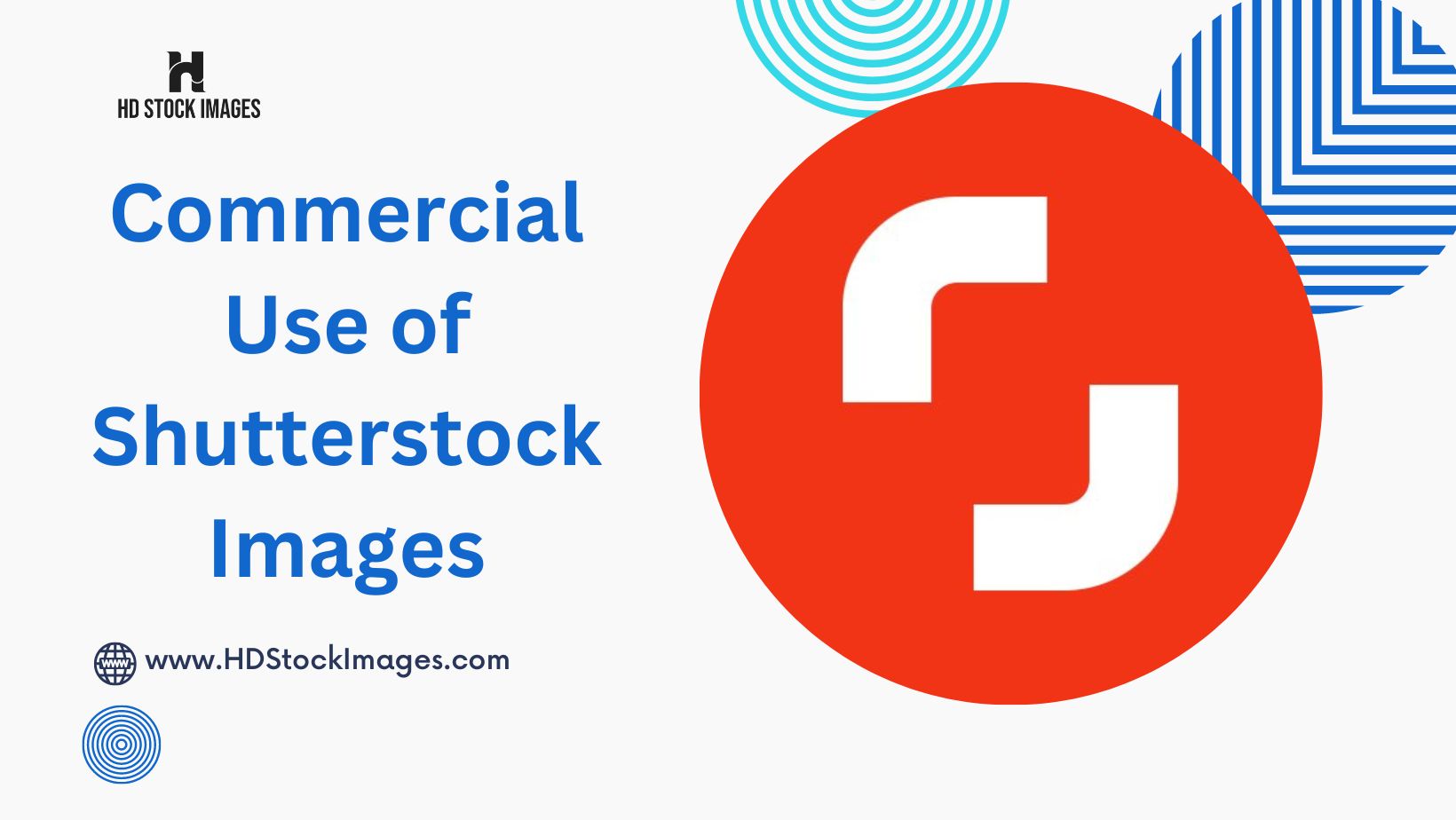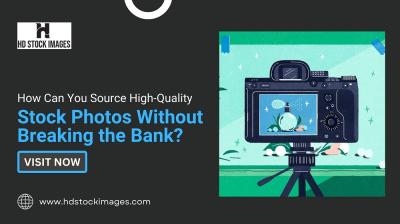I. Introduction
In today's digital age, high-quality visuals are essential for effective commercial projects, whether it's advertising, marketing, or website design. Shutterstock has emerged as a go-to resource for accessing a vast collection of stock images. However, using Shutterstock images for commercial purposes requires a comprehensive understanding of licensing and usage permissions. This blog post aims to provide clarity on the subject.By delving into the basics of copyright and licensing, exploring different types of Shutterstock licenses for commercial use, discussing proper usage and attribution guidelines, and outlining best practices, you will gain valuable insights into incorporating Shshuutterstock images ethically and legally into your commercial projects.Also Read This: Here Is Your Roadmap to Instagram Saver Private Success!
II. Copyright and Licensing Basics
 To ensure a solid understanding of using Shutterstock images for commercial purposes, it's crucial to grasp the fundamentals of copyright and licensing. Consider the following points:A. Explanation of copyright:
Copyright is a legal protection that grants exclusive rights to creators of original works, including images, graphics, and photographs. It provides the copyright holder with the authority to control reproduction, distribution, and display of their work.B. Differentiating between exclusive and non-exclusive licenses:
An exclusive license grants the licensee exclusive rights to use the content, meaning others cannot use the same content during the license period. In contrast, a non-exclusive license permits multiple parties to use the content simultaneously.C. Understanding commercial use and licensing:
Commercial use refers to the incorporation of copyrighted content into projects with a profit-oriented purpose. Licensing is the process of obtaining permission to use copyrighted material. When using Shutterstock images for commercial purposes, appropriate licenses must be obtained to ensure legal compliance.By grasping these copyright and licensing basics, you will be better equipped to navigate the legal landscape surrounding the use of Shutterstock images for your commercial projects.
To ensure a solid understanding of using Shutterstock images for commercial purposes, it's crucial to grasp the fundamentals of copyright and licensing. Consider the following points:A. Explanation of copyright:
Copyright is a legal protection that grants exclusive rights to creators of original works, including images, graphics, and photographs. It provides the copyright holder with the authority to control reproduction, distribution, and display of their work.B. Differentiating between exclusive and non-exclusive licenses:
An exclusive license grants the licensee exclusive rights to use the content, meaning others cannot use the same content during the license period. In contrast, a non-exclusive license permits multiple parties to use the content simultaneously.C. Understanding commercial use and licensing:
Commercial use refers to the incorporation of copyrighted content into projects with a profit-oriented purpose. Licensing is the process of obtaining permission to use copyrighted material. When using Shutterstock images for commercial purposes, appropriate licenses must be obtained to ensure legal compliance.By grasping these copyright and licensing basics, you will be better equipped to navigate the legal landscape surrounding the use of Shutterstock images for your commercial projects.Also Read This: How to Rip Getty Photos Without Watermarks Legal Considerations and Ethical Concerns
III. Types of Shutterstock Licenses for Commercial Use
Shutterstock offers various licensing options that cater to different commercial needs. Understanding these licenses is essential to ensure proper usage of Shutterstock images. Here are the key types of licenses available:A. Royalty-Free License:
1. Definition and benefits: A royalty-free license grants the right to use an image multiple times without additional fees. It allows broad usage across different projects and mediums. 2. Limitations and usage guidelines: While royalty-free images have fewer restrictions, they are subject to certain limitations, such as a cap on the number of reproductions or restrictions on sensitive topics. It is important to review and adhere to the specific usage guidelines provided by Shutterstock.B. Enhanced License:
1. Definition and extended usage permissions: An enhanced license provides additional usage permissions beyond those offered by a standard royalty-free license. It may include options like print runs, merchandise, or use in templates for resale. 2. Pricing and considerations: Enhanced licenses often come at an additional cost compared to the standard royalty-free license. Carefully assess your project requirements and budget to determine if the extended permissions justify the investment.C. Custom Licensing:
1. Tailoring licenses to specific commercial needs: Shutterstock offers the option to customize licenses based on unique project requirements. This allows negotiation of usage terms beyond the standard licenses. 2. Engaging with Shutterstock's licensing team: Contact Shutterstock's licensing team to discuss custom licensing options. They can guide you through the process and provide tailored solutions for your specific commercial use case.By understanding the different types of licenses offered by Shutterstock, you can select the most suitable license that aligns with your commercial project's requirements. Ensure that you review and comply with the terms and conditions associated with each license to utilize Shutterstock images legally and ethically.This week I'll be tweeting some highlights of The Duke and Duchess of Edinburgh's visit to Brunei, in October 2017🇧🇳
Starting with this beautiful photo of TRH arriving from a boat tour around the Water Village and mangroves.📸Tim Rooke/Shutterstock pic.twitter.com/3hW7pZhpxQ— Mariana (@Mari_Edinburghs) July 11, 2023
Also Read This: How to Remove the Alamy Watermark with or Without Photoshop
IV. Proper Usage and Attribution
When incorporating Shutterstock images into your commercial projects, it is crucial to follow proper usage and attribution guidelines. Consider the following practices:A. Displaying copyright notices and Shutterstock watermarks: Respect the copyright ownership by not removing or altering any copyright notices or watermarks embedded in the Shutterstock images. They provide essential information and attribute the image to its creator.B. Understanding attribution requirements for commercial use: Some Shutterstock images may require attribution according to the licensing terms. Familiarize yourself with the specific attribution guidelines provided by Shutterstock. Ensure that you credit the image appropriately, including the photographer's name and a copyright notice, as per the license requirements.C. Properly crediting Shutterstock contributors and the platform: When attributing the Shutterstock image, include the photographer's name and give credit to Shutterstock as the source. It is also recommended to include a hyperlink to the image's Shutterstock page, if applicable, to provide additional context and recognition to the creator.Adhering to these practices ensures that you respect the rights of Shutterstock contributors and maintain ethical and legal usage of the images in your commercial projects. Proper usage and attribution not only demonstrate professionalism but also contribute to a positive relationship between content creators and users.Also Read This: How to View Getty Images Without Watermark
V. Guidelines for Ethical and Legal Commercial Use
When using Shutterstock images for commercial purposes, it is important to adhere to ethical and legal guidelines. Consider the following guidelines to ensure compliance:A. Identifying and avoiding copyright infringement risks: Conduct thorough research to ensure that the Shutterstock images you use are properly licensed and do not infringe upon the copyrights of others. Be cautious when sourcing images from other websites or individuals, and verify their authenticity and licensing status.B. Respecting model releases and sensitive content considerations: If the Shutterstock image contains recognizable individuals, ensure that proper model releases have been obtained. Respect privacy rights and avoid using images in a way that may be sensitive or offensive to individuals or communities.C. Monitoring usage rights and expiration dates: Keep track of the rights associated with the Shutterstock images you use. Some licenses may have expiration dates or usage limitations, such as geographical restrictions or restrictions on specific media types. Regularly review your licenses to ensure compliance throughout the duration of your commercial project.By following these guidelines, you can ensure ethical and legal commercial use of Shutterstock images. Respecting copyright, obtaining necessary permissions, and being mindful of sensitive content considerations contribute to a responsible and professional approach to utilizing copyrighted material in your commercial projects.The following video is about Shutterstock:Also Read This: Steps to Insert an Image in an Excel Comment Box
VI. Best Practices for Incorporating Shutterstock Images in Commercial Projects
When incorporating Shutterstock images into your commercial projects, consider the following best practices to maximize their impact and ensure a seamless integration:A. Select relevant and high-quality images: Choose images that align with your project's theme, message, and target audience. High-resolution images with clear subject matter and visually appealing composition will enhance the overall quality and professionalism of your project.B. Customizing and editing images to fit the project's branding: Tailor the images to match your project's branding by adjusting colors, adding overlays, or applying filters, if necessary. This customization ensures consistency and helps create a cohesive visual identity.C. Ensuring consistency and coherence in visual content: Maintain a consistent visual style throughout your project by using Shutterstock images that share similar aesthetics. This cohesiveness will create a polished and professional look, enhancing the overall impact of your commercial materials.D. Properly integrating images within the project layout: Carefully consider the placement and size of the images within your design or content layout. Ensure that the images support and enhance the accompanying text or messaging, creating a harmonious and engaging user experience.E. Regularly reviewing and refreshing image selection: Periodically review your Shutterstock image selection to ensure that they remain relevant, up-to-date, and aligned with any changes in your project or branding. Refreshing your image selection will keep your content fresh and maintain audience interest.By following these best practices, you can effectively incorporate Shutterstock images into your commercial projects, elevating the visual appeal and ensuring a cohesive and professional presentation. Remember to respect the terms and conditions of the licenses, giving proper attribution where required, and continually assessing the relevance and quality of the images used.Also Read This: What Are the Types of Licenses Available on Alamy? A Complete Guide
VII. Alternatives to Shutterstock for Commercial Use
While Shutterstock is a popular platform for accessing stock images, there are other alternatives that offer a diverse range of high-quality visuals for commercial use. Consider the following options:A. Adobe Stock: Adobe Stock provides a vast collection of royalty-free images, illustrations, videos, and templates. It seamlessly integrates with Adobe Creative Cloud applications, making it convenient for designers and creatives.B. Getty Images: Getty Images is a renowned stock photography agency with an extensive library of high-quality images. It offers a range of licensing options for commercial use, including rights-managed and royalty-free images.C. Unsplash: Unsplash is a popular platform that offers a vast collection of high-resolution, royalty-free images contributed by a global community of photographers. It is a valuable resource for commercial projects with a focus on authenticity and storytelling.D. Pixabay: Pixabay provides a wide variety of high-quality images, illustrations, and videos that are available under a Creative Commons CC0 license. This license allows for commercial use without the need for attribution.E. Pexels: Pexels offers a curated collection of free stock photos and videos that are licensed under the Creative Commons Zero (CC0) license. It is an excellent resource for commercial projects that require visually appealing content.When considering alternatives to Shutterstock, evaluate factors such as the quality and relevance of the images, licensing options, pricing, and user experience. Always review the specific licensing terms and attribution requirements associated with each platform to ensure compliance with copyright and licensing regulations.By exploring these alternatives, you can find diverse and captivating visuals that suit your commercial project's needs while ensuring legal and ethical usage of copyrighted content.Also Read This: How Hard Is It to Get Approved as a Getty Images Contributor?
VIII. FAQs about commercial use of Shutterstock images:
- Commercial use: This type of use is for advertising and promotional purposes. It includes using images on websites, in marketing materials, and in products.
- Editorial use: This type of use is for news and informational purposes. It includes using images in articles, blog posts, and social media posts.
- Standard license: This license allows you to use images for marketing and advertising, but not for products.
- Enhanced license: This license allows you to use images for marketing, advertising, and products.
- The right to use the image on your website, in your marketing materials, and in your products.
- The right to modify the image to fit your needs.
- The right to distribute the image to others.
- You cannot use the image in a way that is defamatory, offensive, or illegal.
- You cannot use the image in a way that implies endorsement by Shutterstock or the photographer.
- You cannot use the image in a way that competes with Shutterstock's business.

 admin
admin








